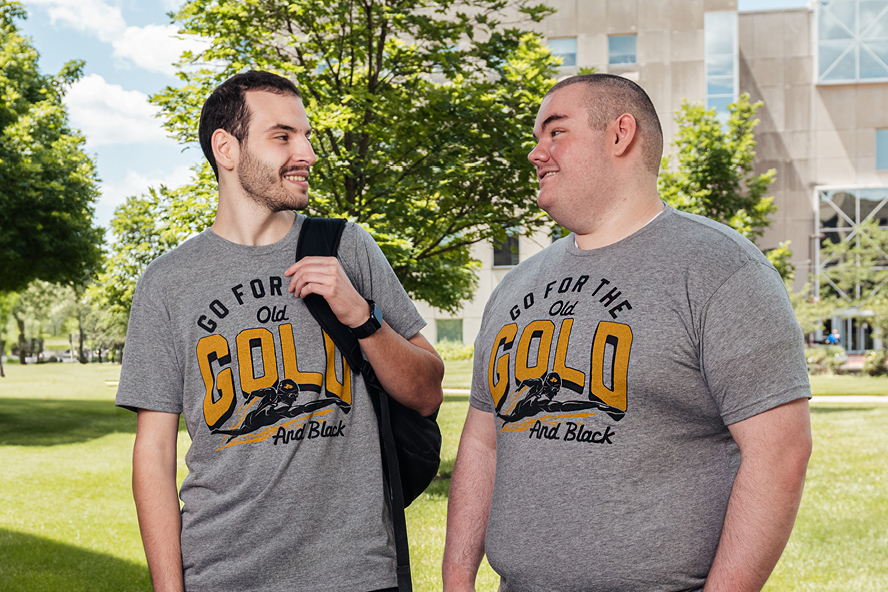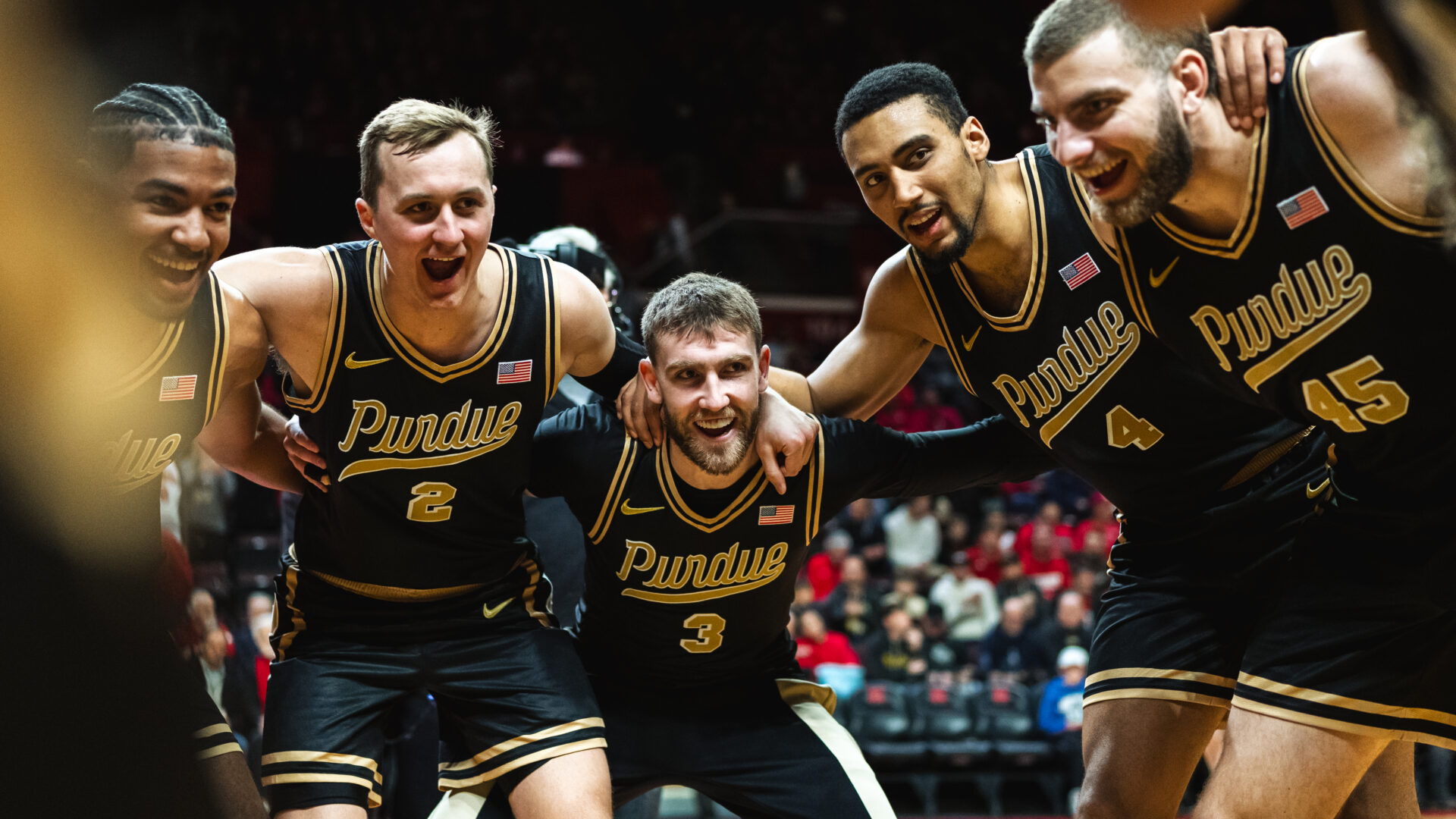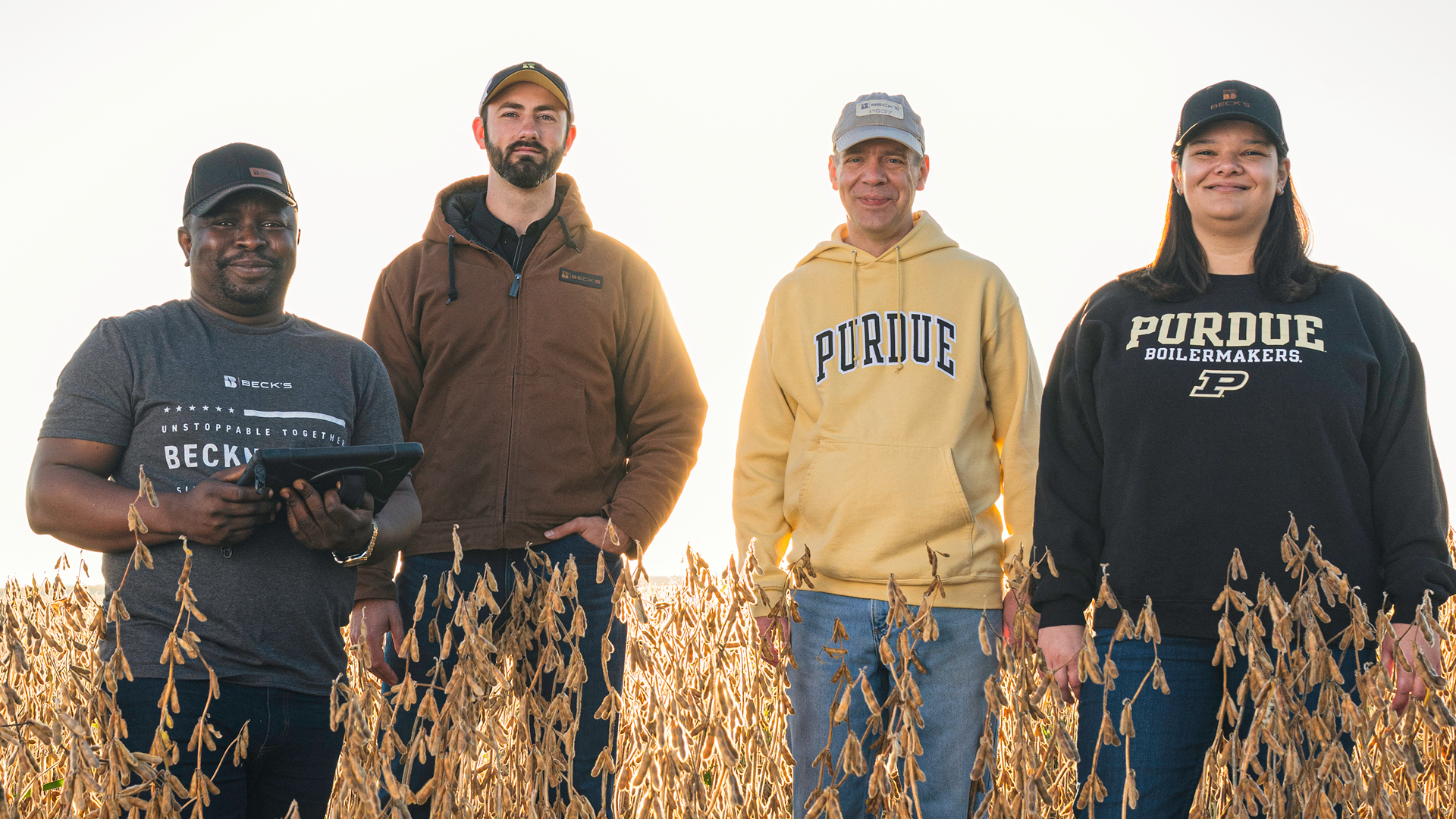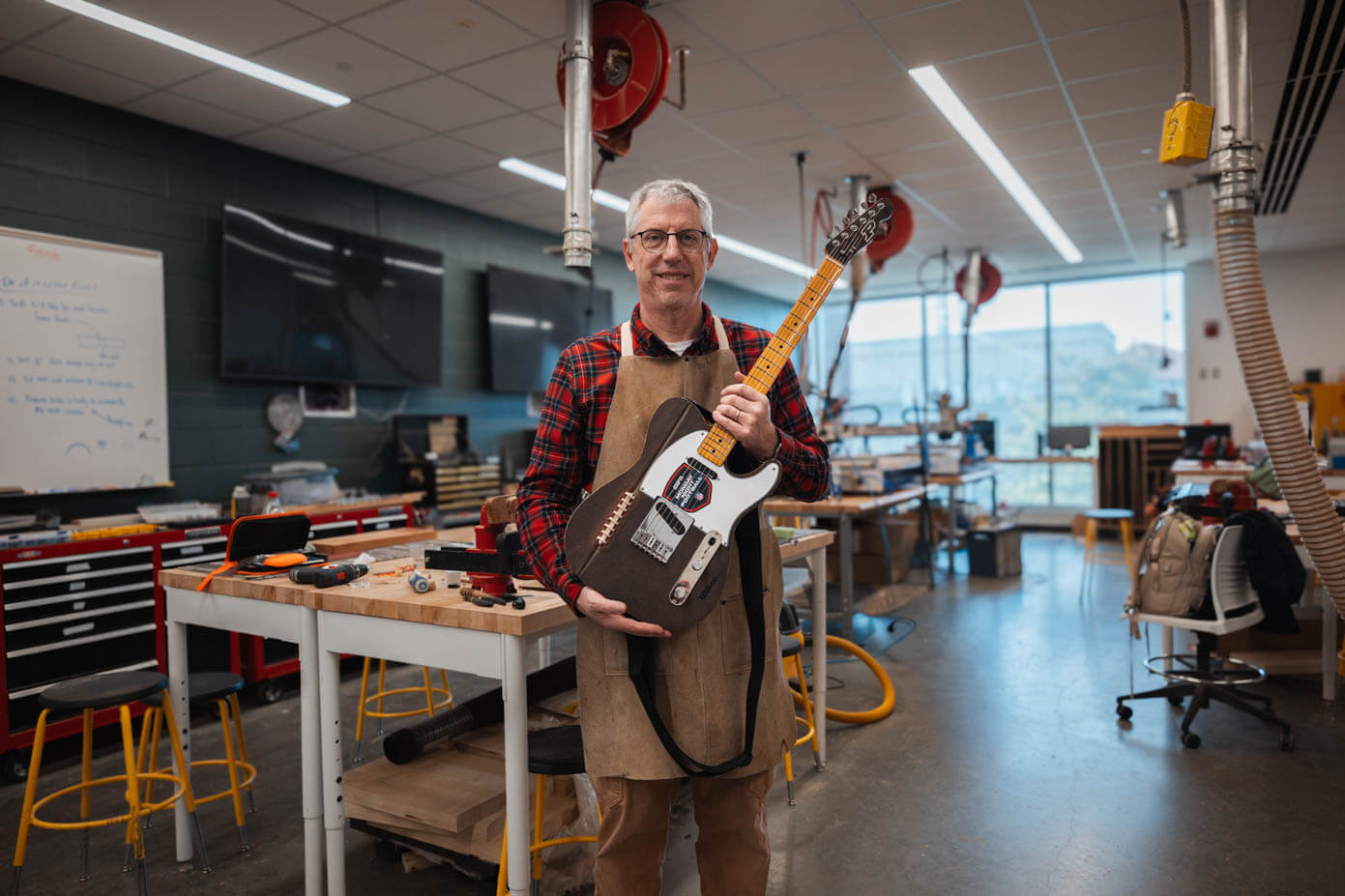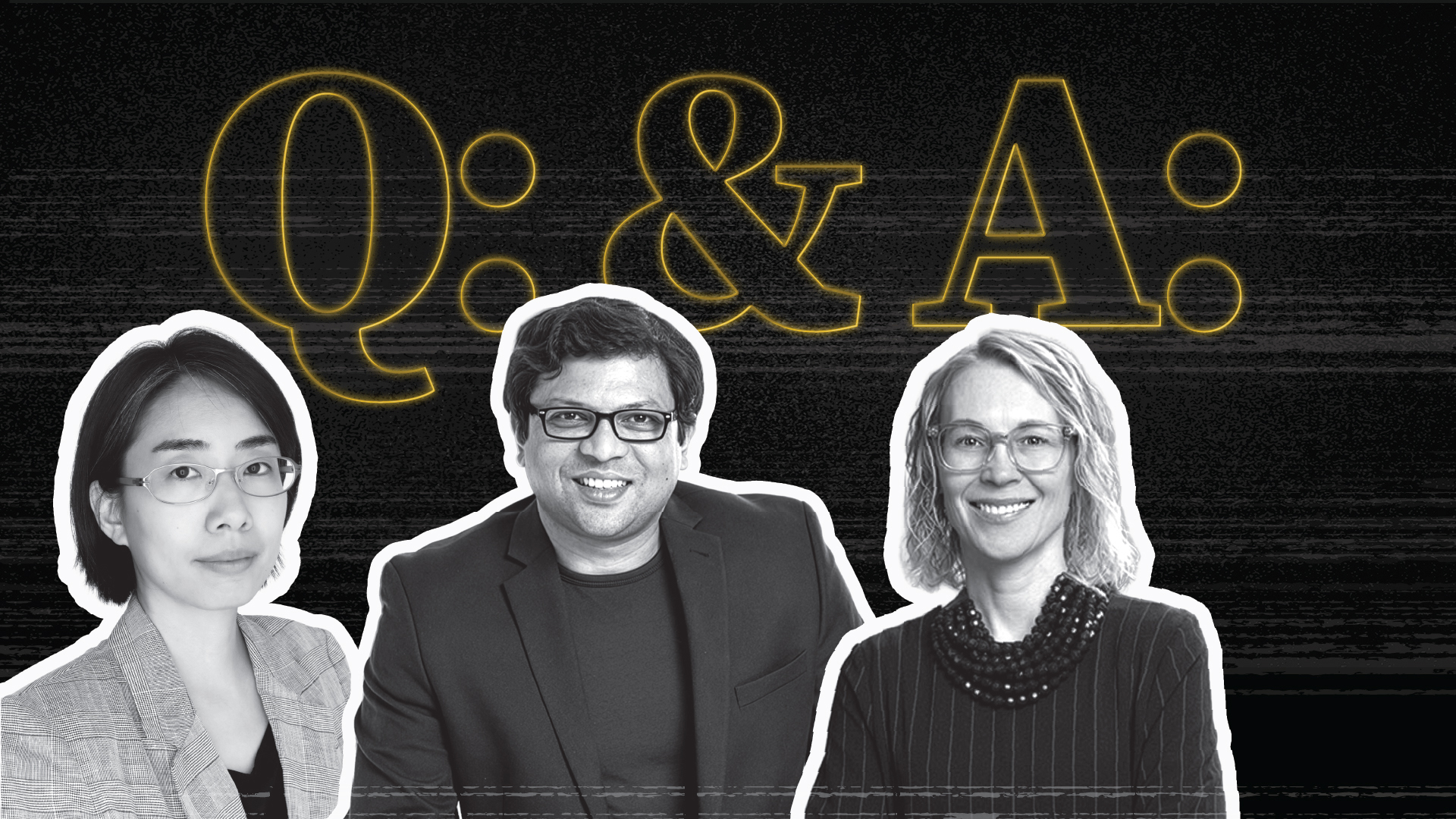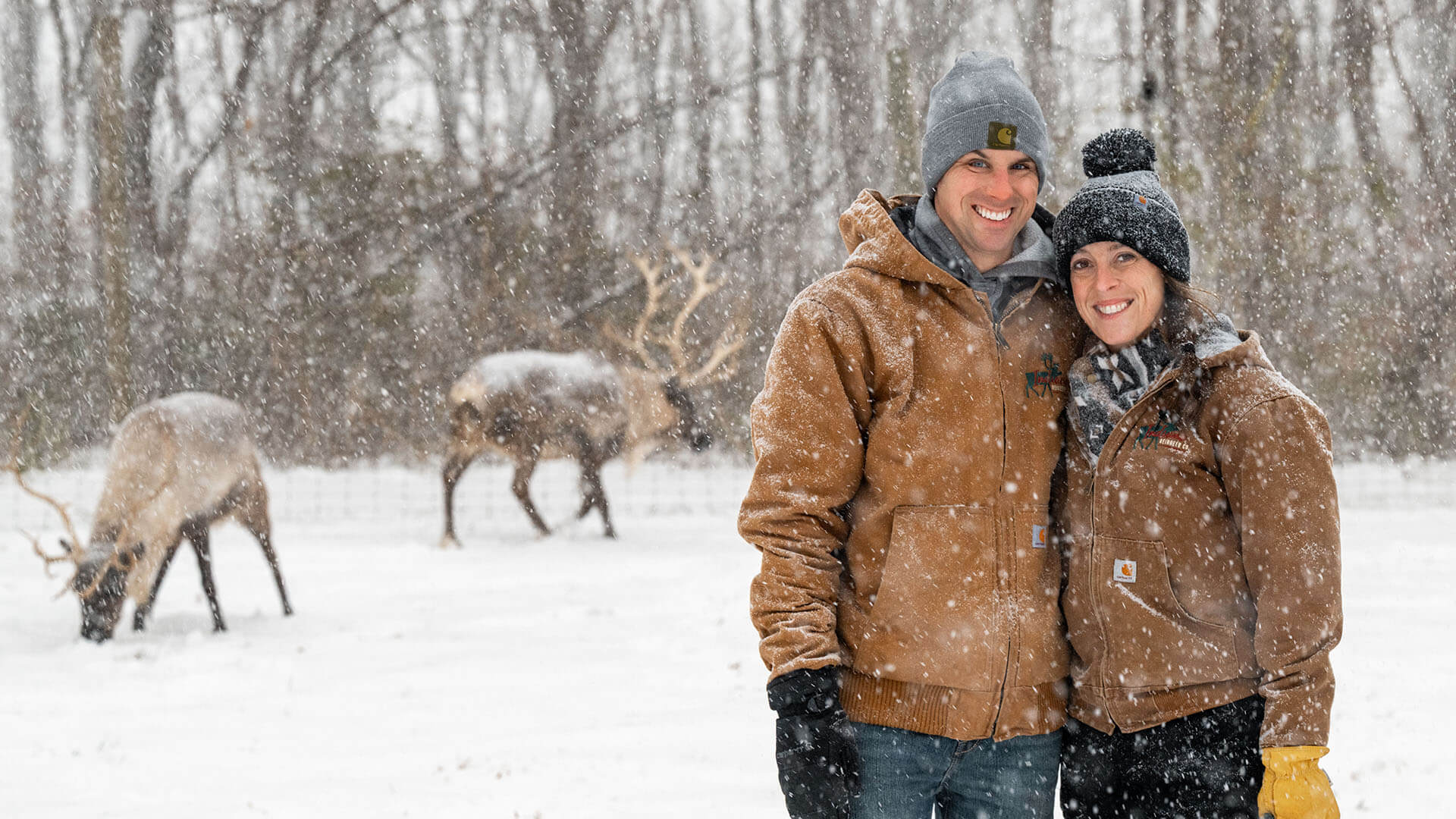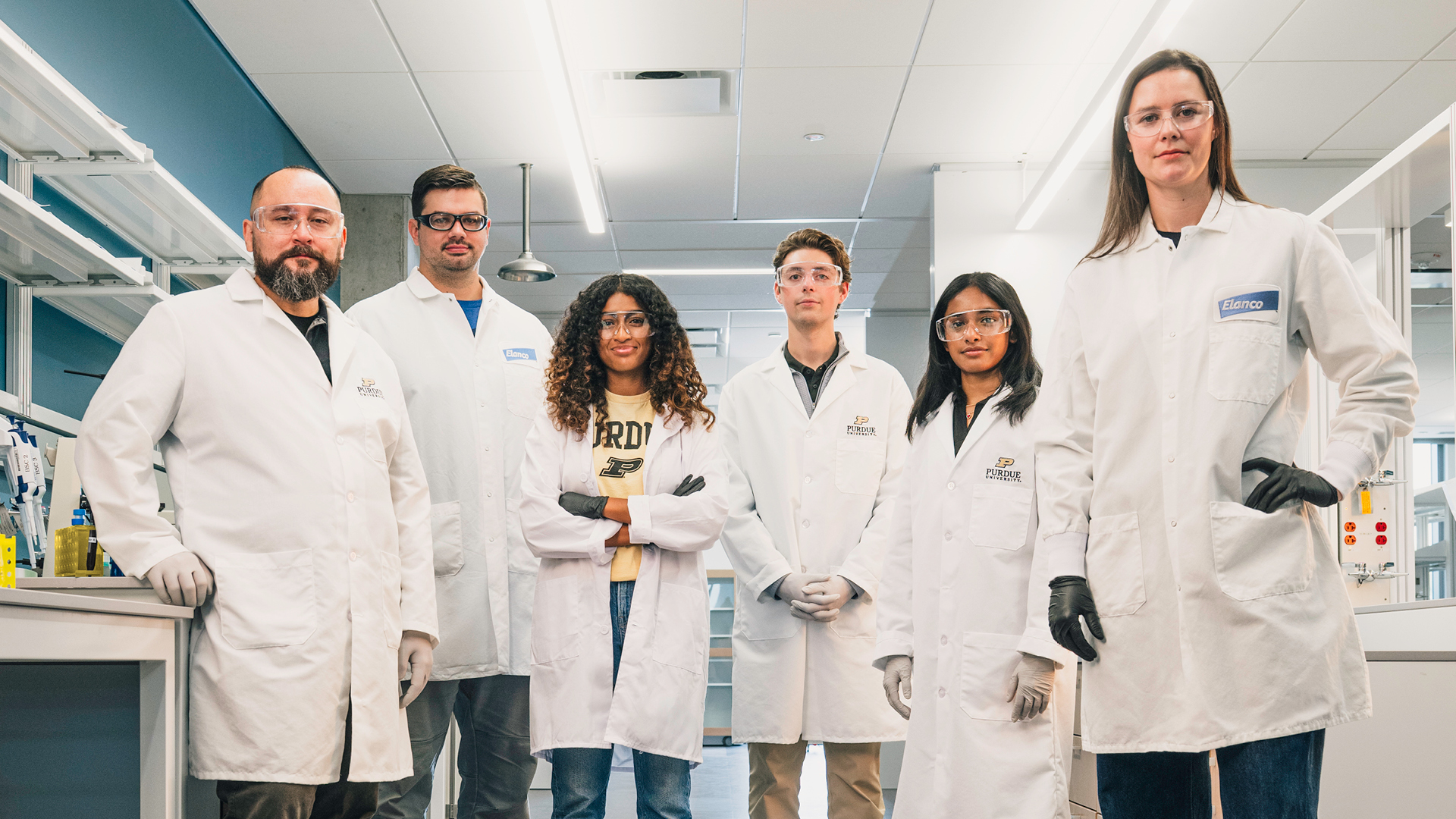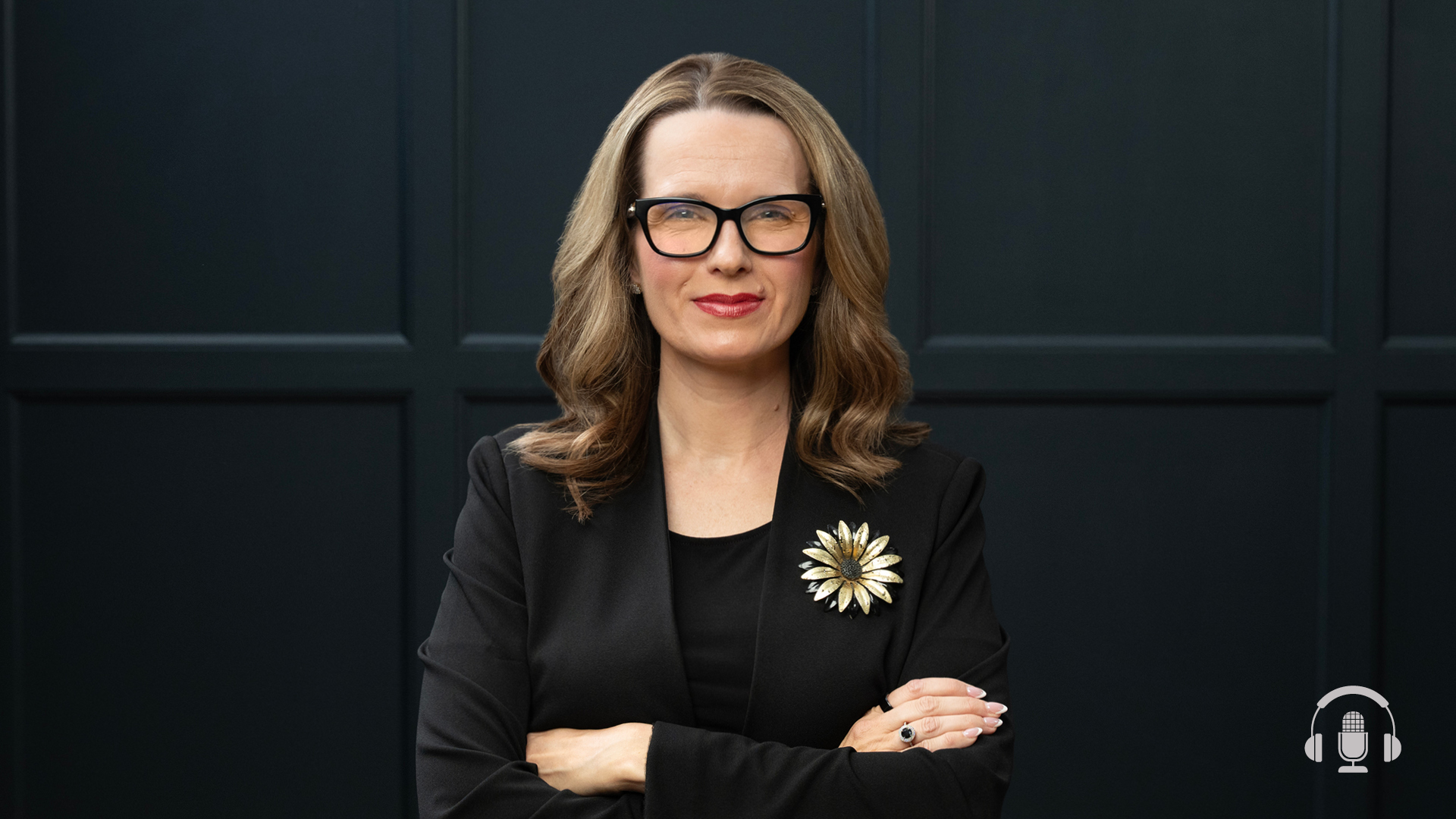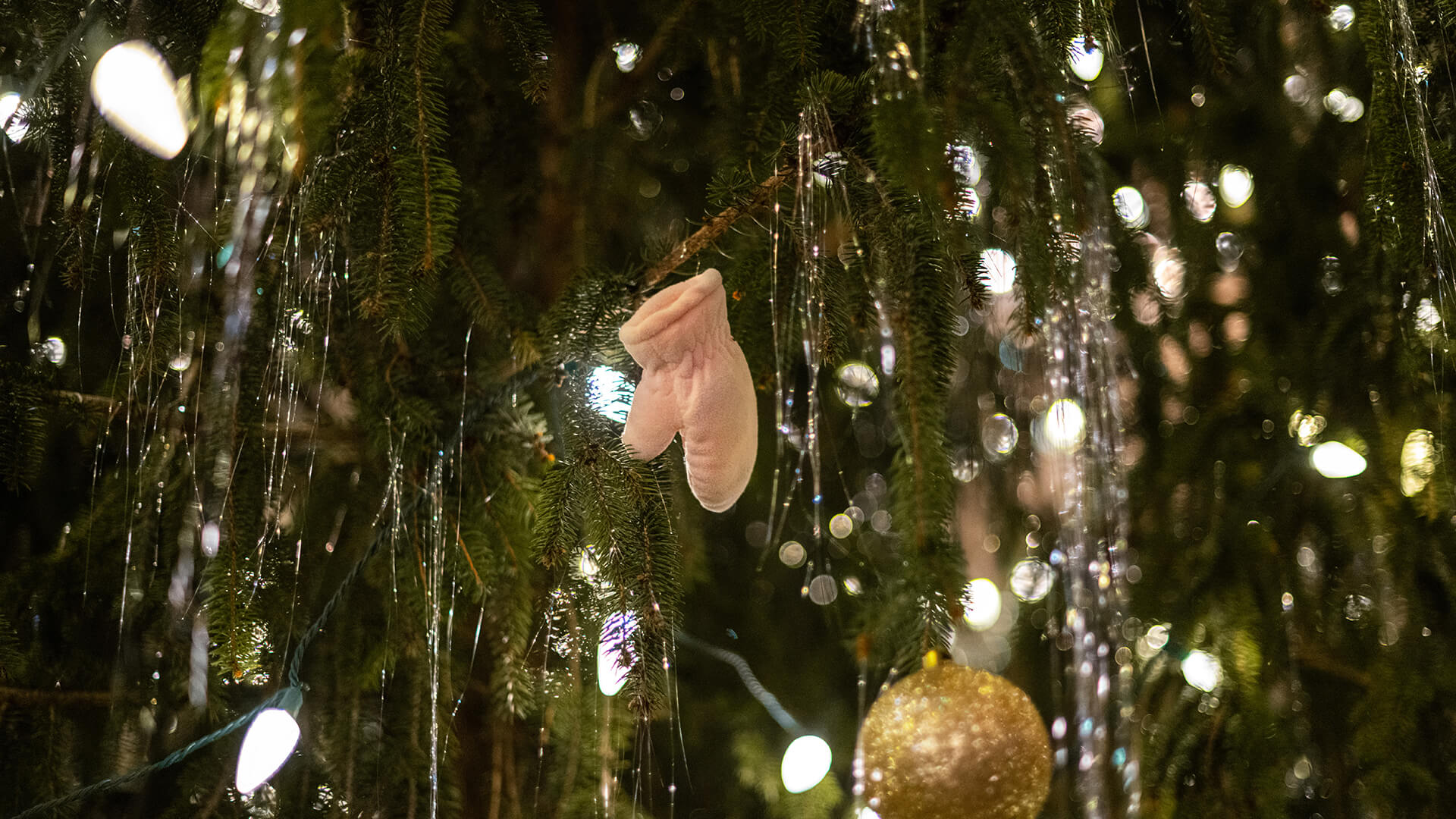Virtual reality swim experience showcases Purdue talent in Indianapolis
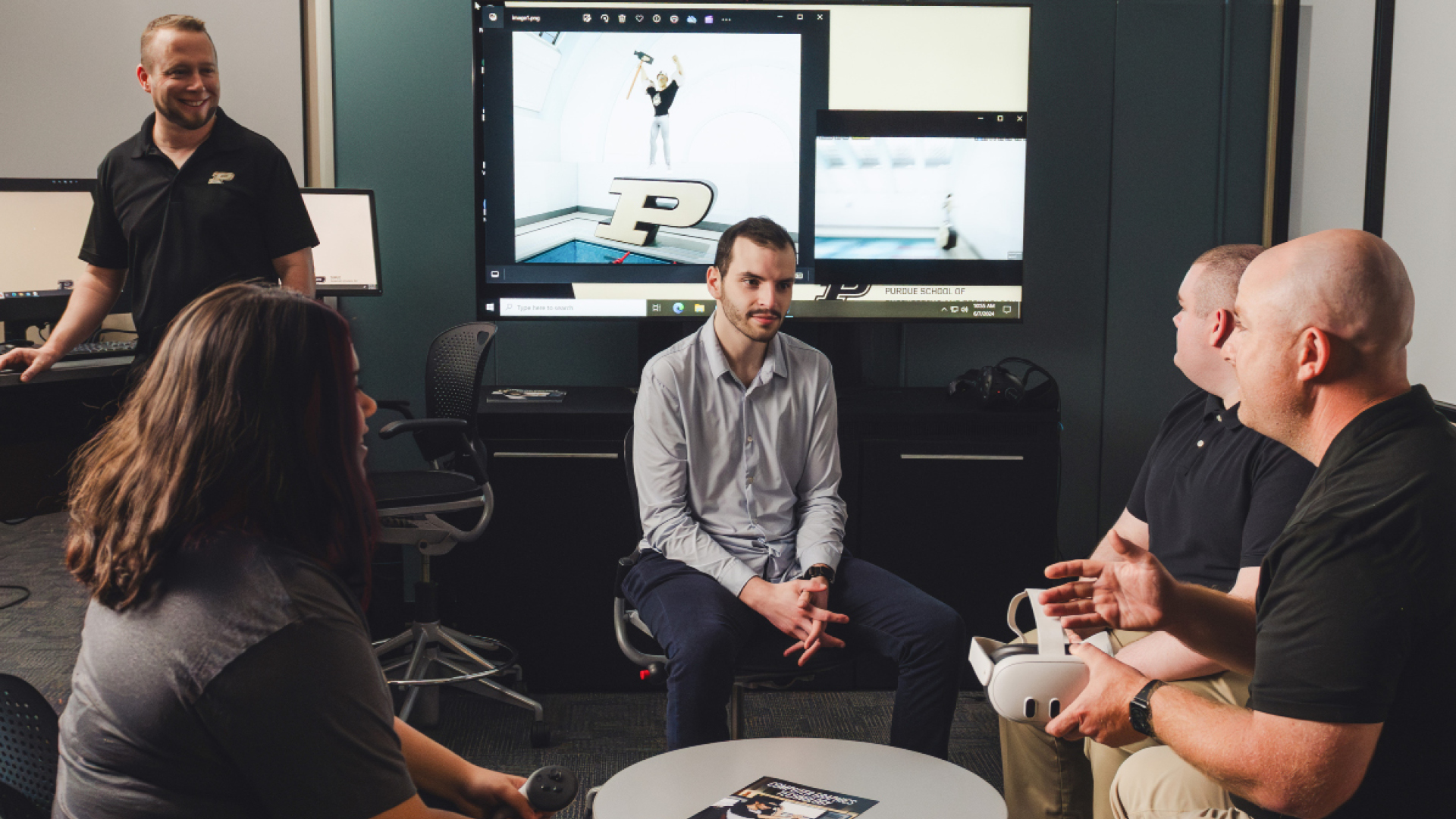
Purdue University students and faculty in Indianapolis collaborated to create the USA Swimming LIVE virtual reality experience in just four weeks.
Go behind the scenes of a VR game creation and learn more about Purdue’s new STEM-focused urban campus.
The horn sounds. You launch from the starting blocks, and the crowd goes wild. Purdue Pete cheers you on as you race down the pool. Flags are flying, and Boilermaker pride is all around you. Are your Olympic dreams coming true? Close. It’s the Purdue USA Swimming LIVE VR experience.
Purdue students and faculty in Indianapolis designed the VR experience to celebrate the U.S. Olympic Team Swimming Trials being held in Indiana’s capital city. Game participants are fully immersed in a 3D race in which they swim for a spot on an Olympics-inspired podium.
How the game is played (and made)
“The Purdue USA Swimming LIVE VR experience is interactive and fast,” says Jason Guy, clinical assistant professor of computer graphics technology. “Our goal is for any person of any age or ability to have fun. People can jump in and out of the game quickly.”
Creation of the multiplayer game was accelerated, too. It can take years to design a VR experience. But in just four weeks, Guy — along with students Andres Garcia de Quevedo, a junior animation major, and Lukas Wise, a senior computer graphics major — concepted, designed and built Purdue’s VR swim.
“The process of game creation is complex,” Wise says. “We break it down piece by piece and tackle each component individually. A lot of prep work goes in each step, so you need a solid plan before you start.”
User experience was a key consideration: Should the camera view be overhead and encompass the entire pool? Should it be a third-person view from behind the swimmer? What action should a player perform to advance their avatar? These are all questions that Guy, Wise and Garcia de Quevedo explored while designing the game.
“Andres did the menu setup,” Guy says. “This is what the players see when they first load into the game. And Lukas worked on the animations, getting the avatars to swim across the pool.”
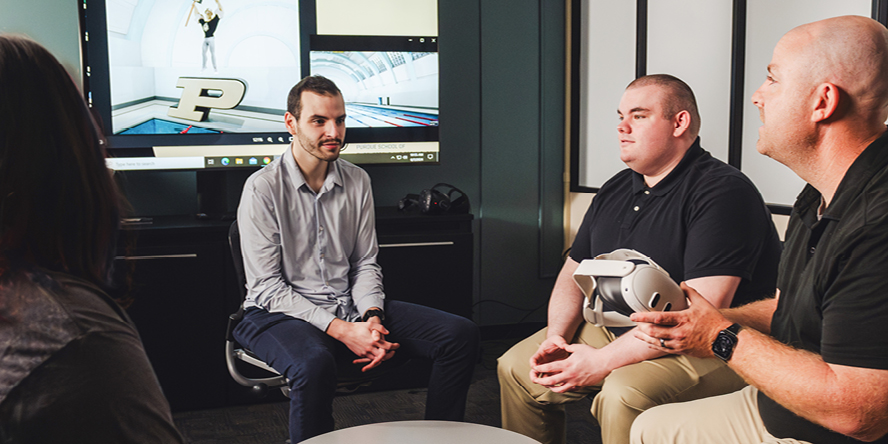
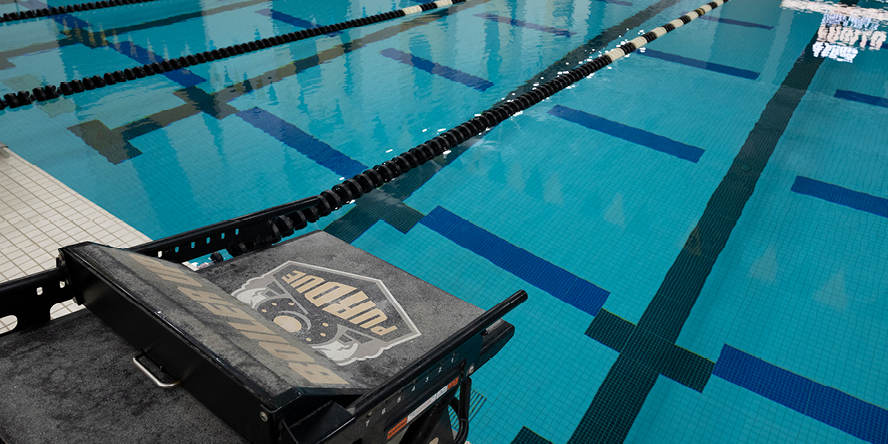
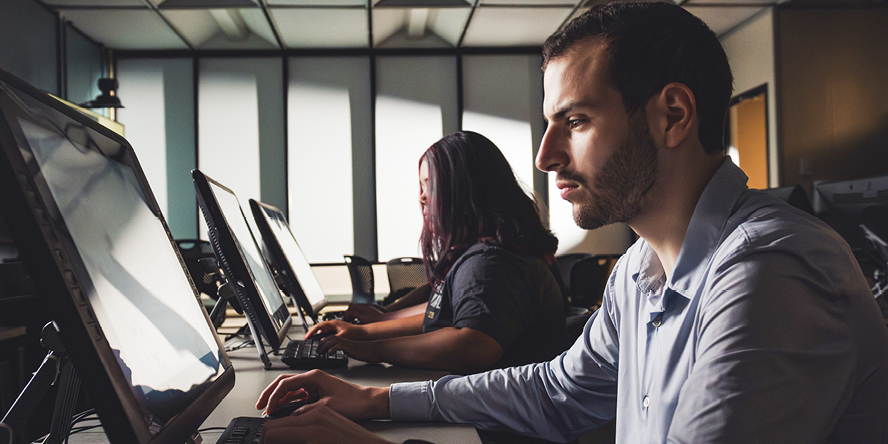
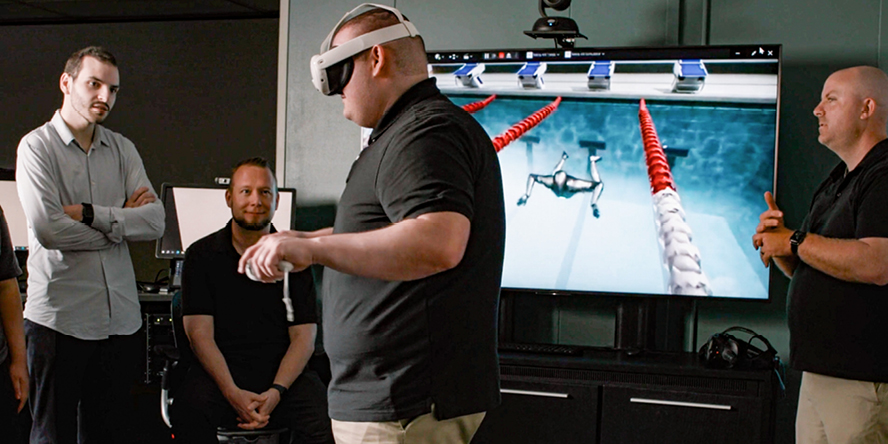
Purdue Pete cheering you on? That’s all Guy. “I built Pete using Autodesk Maya, which is a 3D computer graphics application,” he explains. “Then I uploaded the screenshots into Unreal Engine 5, which is driving this game.”
Unreal Engine allowed Guy, Wise and Garcia de Quevedo to control lighting, perspective looping, the cheering animation of Purdue Pete, the Motion P on the bottom of the pool, the soundscape, as well as core functionality.
“Core functionality — pressing this does that — is always going to be the hardest aspect of game design in my opinion,” Wise says.
Purdue’s VR experience uses Meta Quest headsets, which go over a player’s eyes and ears. “They’re self-contained,” Guy says. “You don’t need a computer to run the game. It’s all in the headsets themselves.”
Wise and Garcia de Quevedo built the VR swim experience as part of a summer independent study they are doing with Guy. Hands-on learning experiences such as this are a big part of what drew them to Purdue in Indianapolis.
Industry experts, career-ready students in Indianapolis
“My professors are excellent,” Garcia de Quevedo says. “And they’re extremely supportive. I had a solid understanding of art and Adobe before I went into college, but my professors showed me how to use those skills to create something meaningful. They have pushed me to be the best I can be.”
Chris Rogers, site director and associate professor of computer graphics technology, says that having smaller class sizes allows him to forge these types of relationships with students. “I hold one-on-one sessions with students, even if it’s for just 15 minutes, to check in with them about class, but also to review their portfolios or hear about their career goals or internship interests.
“My area is video production and motion design. I love being able to help students along on their journey, and then, ultimately, hearing that they landed an amazing job and are really excited about what they’re doing.”
Creating connections between students and industry partners is equally important to Rogers.
“Conner Prairie is going through a major redesign of their entire experience right now,” he says. “The master planner for that project is one of our graduates, and we’re looking at new projects to do with them going forward.”
The process of game creation is complex. We break it down piece by piece and tackle each component individually. A lot of prep work goes into each step, so you need a solid plan before you start.
Lukas Wise Purdue computer graphics student in Indianapolis
He also points to recent associations with the Indiana State Museum and Historic Sites and the Harrison Center, as well as a long-standing relationship with The Children’s Museum of Indianapolis.
“We are continually exploring opportunities that are unique to Indianapolis,” Rogers says. “Armando Lanuti, president of Creative Works, is on our advisory council. And we have cultivated a close relationship with the leadership of 16 Tech.”
Purdue’s Indianapolis location plays a key role in experiential learning, which is a point of emphasis for the urban campus.
“We’ve done many projects where we’ve partnered with outside entities,” Rogers says. “Being in the city, there are so many opportunities around tourism, sports and culture.”
“I am a huge fan of Indianapolis,” agrees Wise. “I love learning in an urban environment.”
Garcia de Quevedo says that the city helps him stay focused on outcomes. “I am career oriented and want to get my work done; Indy has been instrumental in that process.”
Collaborative, hands-on learning
The ability to work closely and creatively with students and faculty who are passionate about their work has been an integral part of Wise and Garcia de Quevedo’s experiences at Purdue in Indianapolis.
In addition to the Purdue VR swim project, Garcia de Quevedo has collaborated with other students on motion videos, video games and short films. “For a group capstone, I worked with Lukas and another student on a 3D animated short film,” he says.
“Andres and I met in class,” adds Wise. “At first, we were complete strangers, awkwardly sitting next to each other, but as we worked on group projects together, we ended up becoming friends. The first game that Andres and I developed together was simple: Roll a ball into a goal. Now, we’re creating a VR experience.”
The VR swim game will be Wise’s last project as a Boilermaker, as the independent study he is building it for fulfills his last graduation requirement. After graduation, he is interested in pursuing environmental design with an eye toward working in game design or the film industry.
Continuing to innovate and hone his skills is something that Wise says he is well prepared to do: “I feel like a dry sponge being dipped in water, always absorbing new information.”
